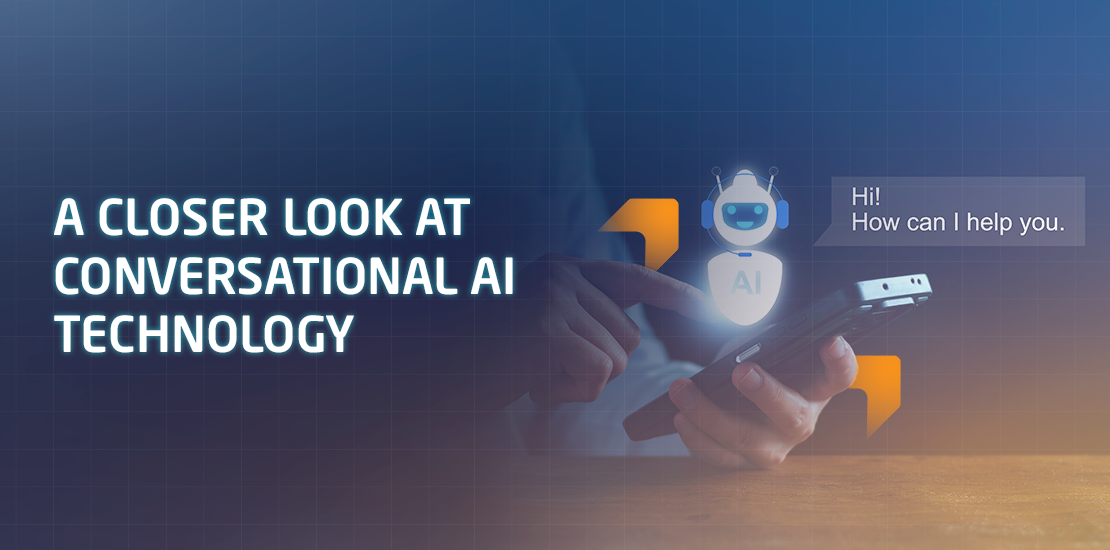
Conversational AI is a technology that enables machines to understand and interact with humans in a natural language. It is the science of developing algorithms and software to create intelligent virtual agents or chatbots that can understand and respond to human queries. The technology behind conversational AI is complex and involves various fields such as natural language processing (NLP), and machine learning (ML). In this article, we will explore the technology behind conversational AI and how it works.
Natural Language Processing (NLP)
NLP is a field of computer science, artificial intelligence, and computational linguistics that deals with the interactions between computers and humans in natural language. It is a technology that enables computers to understand, interpret, and generate human language. NLP uses various techniques such as text analytics, sentiment analysis, and entity recognition to extract meaning from natural language data. In conversational AI, NLP is used to understand the user's intent and extract relevant information from their queries.
NLP works by breaking down human language into smaller components such as words, phrases, and sentences. These components are then analysed for their semantic and syntactic meaning. Semantic analysis involves understanding the meaning of words and phrases in the context of the sentence. Syntactic analysis involves understanding the grammatical structure of the sentence. Once the analysis is complete, the system generates a response that is appropriate to the user's query.
Machine Learning (ML)
Machine learning is a subset of artificial intelligence that involves teaching machines to learn from data without being explicitly programmed. It is a technique that enables computers to improve their performance on a specific task over time by learning from data. In conversational AI, machine learning is used to train the system to understand the user's intent and generate appropriate responses.
Machine learning works by using algorithms to analyse and learn from data. The algorithms are trained on a large dataset of conversational data to identify patterns and relationships between the user's queries and the appropriate responses. The system then uses this knowledge to generate responses to new queries. Over time, as the system is exposed to more data, it improves its performance and becomes more accurate in understanding the user's intent.
Conversational AI Architecture
The architecture of conversational AI is complex and involves various components such as a natural language understanding (NLU) module, a dialogue management module, and a natural language generation (NLG) module.
The NLU module is responsible for understanding the user's intent and extracting relevant information from their queries. It uses NLP techniques such as entity recognition and sentiment analysis to identify the user's intent.
The dialogue management module is responsible for managing the conversation between the user and the system. It uses machine learning algorithms to predict the user's next query and generate an appropriate response.
The NLG module is responsible for generating natural language responses to the user's queries. It uses templates and rules to generate responses that are appropriate to the user's query.
Using Conversational AI in Business
Conversational AI is rapidly transforming the way businesses interact with their customers. They can now create intelligent virtual assistants or chatbots that can communicate with customers in natural language.
Here is how businesses can use conversational AI to enhance their operations:
Customer Service
One of the primary use cases of conversational AI in business is customer service. By deploying chatbots on their websites or social media platforms, businesses can provide round-the-clock customer support. Chatbots can answer customer queries, provide product information, and help customers navigate through the website. They can also handle simple tasks such as resetting passwords, checking order status, and processing refunds.
Conversational AI can also help businesses improve the quality of their customer service. By analysing customer interactions with chatbots, businesses can identify areas where they need to improve. They can also use machine learning algorithms to train the chatbots to handle more complex queries over time.
Sales and Marketing
Conversational AI can also help businesses improve their sales and marketing efforts. By deploying chatbots on their websites or social media platforms, businesses can engage with customers in real-time and provide personalised recommendations based on their preferences. Chatbots can also help businesses capture leads and convert them into customers by guiding them through the sales funnel.
Businesses can analyse customer interactions with chatbots to identify the products and services that customers are interested in. They can then use this information to create targeted marketing campaigns that are more likely to resonate with customers.
Cost Reduction
Conversational AI can help businesses reduce costs by automating routine tasks such as customer support and sales. This can free up employees' time and allow them to focus on more strategic tasks.
EDC’s Conversational AI Solution
We offer businesses in different industries a scalable, multilingual conversational AI platform that will allow them to adapt to the future and provide an elevated customer experience.
Request a demo to learn more about our solutions.



